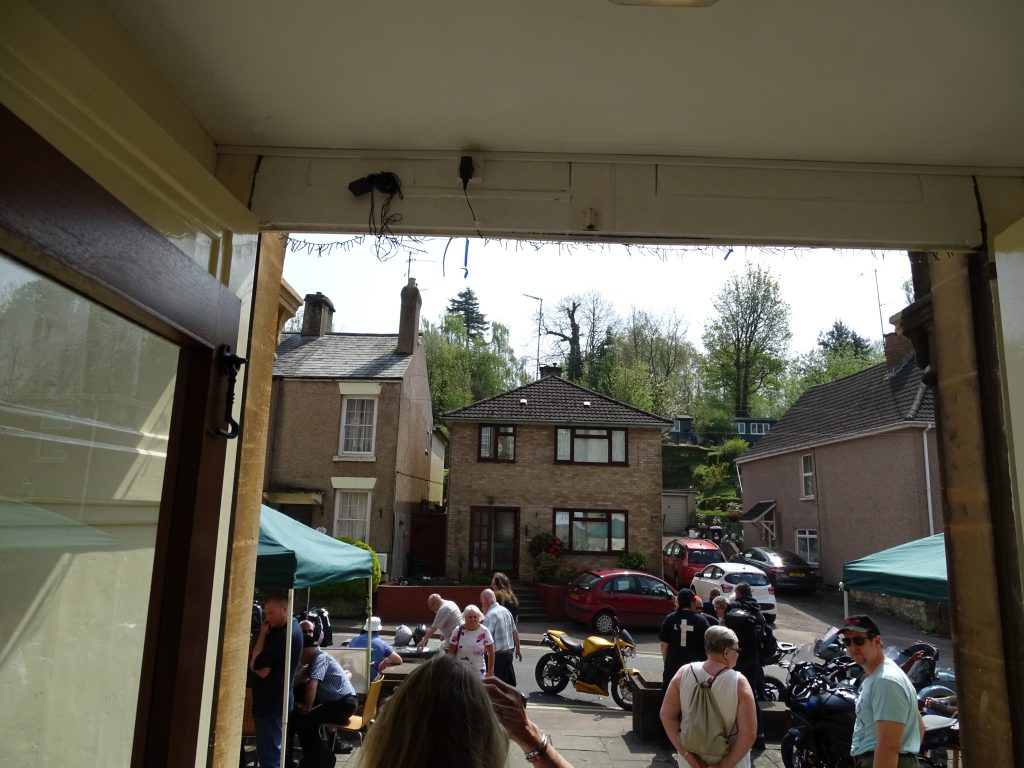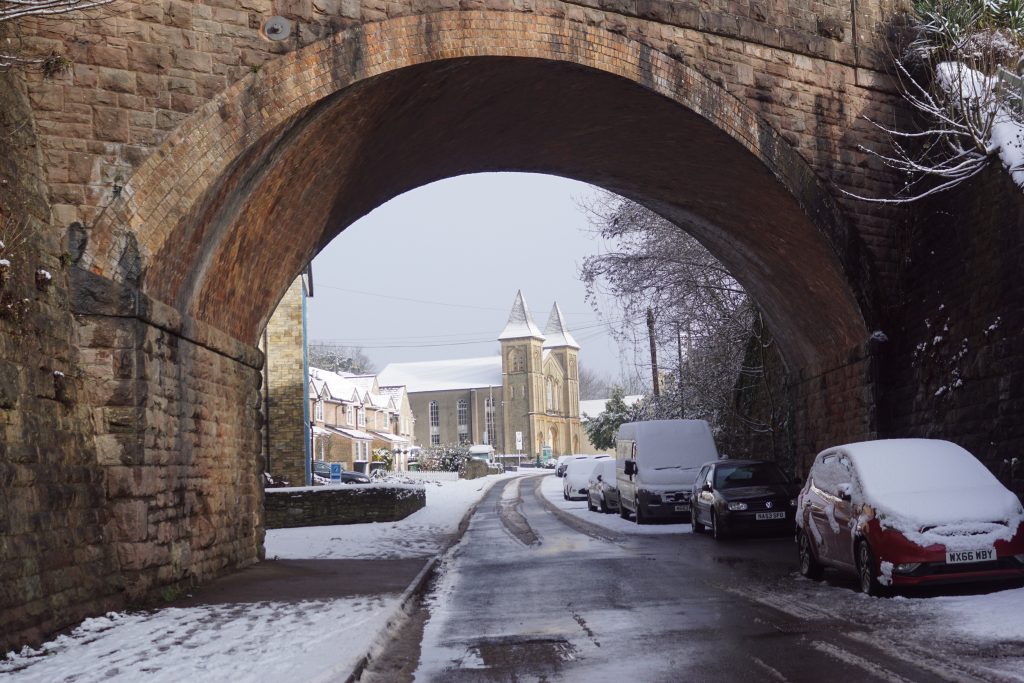The Bell Inn was opposite the Baptist Chapel on the south side of Newland Street. This is according to the surveyor S.G. Gregg who marked it on his Coleford plan of 1849. Gregg’s plan notes that the site of the Bell Inn ‘was replaced by Newland Street Garage and was later occupied by Hodge’s Electrical Stores.’

Perhaps the Bell Inn was used almost exclusively for construction workers employed on erecting the Newland Street Baptist Chapel from 1814 to 1839. The distinctive church, designed in a debased Romanesque style, was designed by C.G. Searle. It is still a prominent feature of the Coleford landscape. The Bell Inn would have served the needs of the church builders for 25 years.

Almost in the shadow of the Baptist Chapel is an impressive skew railway bridge made of local sandstone. It carried the Coleford, Monmouth, Usk & Pontypool Railway which was authorised in 1853 and had opened in 1861. Notwithstanding that the railway line was not a commercial success and had closed as a through route by the end of 1916, the construction work involved – just 14 years after the completion of the Baptist Church – might have saved the Bell Inn from closure.
In the 1891 Gloucestershire licensing book the Bell Inn is listed in the ‘Parish of Newland’, in the petty sessional division of Coleford. James Beard was the occupier / landlord of the ale house and the Bell had an annual rateable value of £11.10s.0d. The owner was Owen James and the pub was trading as a free house, with no brewery tie. There is no mention of the Bell Inn in the 1903 records.

